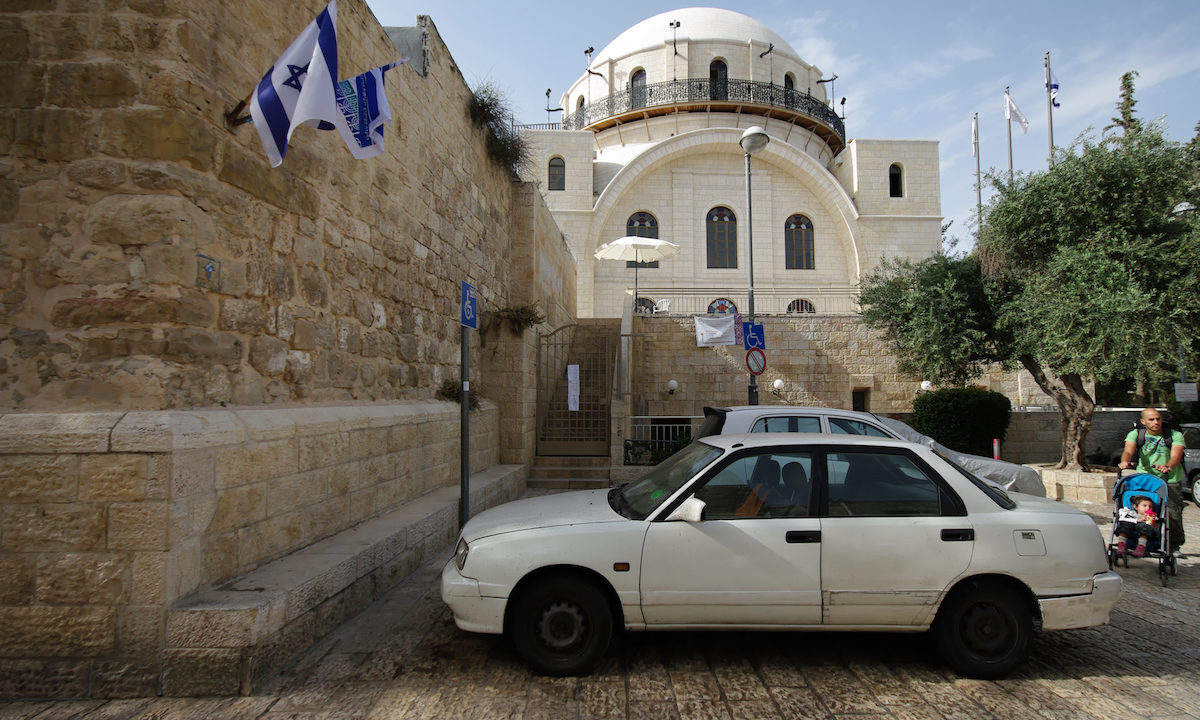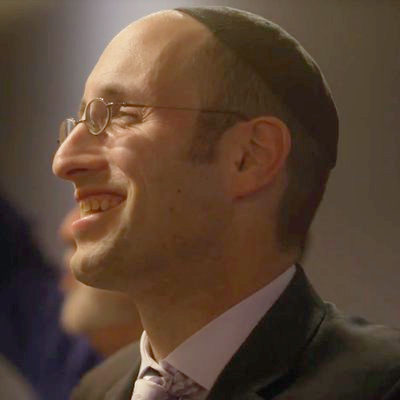The New York Times Slanders Israel—Again
The Gray Lady pretends that one of the greatest modern acts of historical vandalism, destruction, and denial of religious rights never occurred.

In the summer of 1920, Herbert Samuel, the high commissioner of British Mandate Palestine, made his way to the Jewish Quarter of Jerusalem’s Old City to mark the Sabbath with his fellow Jews. He entered the Hurva Synagogue, one of the most exquisite edifices in the Jewish world, with its marble floor and its dome adorned with designs that imitated the starry sky. As the guest of honor, Samuel was invited to read the hafatarah, the prophetic portion, from the magnificent bima, or podium, in the center of the synagogue.
It was the Sabbath immediately following the Ninth of Av, when the destruction of the Temple had been mourned. His Majesty’s representative opened the Bible and proclaimed to the assembled Isaiah’s immortal words: “Comfort ye, comfort ye my people…O Jerusalem, that bringest good tidings, lift up thy voice with strength; lift it up, be not afraid; say unto the cities of Judah, Behold your God!” On the heels of the 1917 Balfour declaration promising a Jewish home in Palestine, the messianic era almost appeared to be at hand.
Yet the very name of the synagogue in which these Jews found themselves, the Hebrew word “hurva,” means “ruin,” and would seem to have been a strange description of this beautiful building. It reflected the fact that it had been constructed at the site of a synagogue destroyed a century before, burned to the ground by an Arab mob along with 40 sacred Torah scrolls inside. Calling it “Hurva” emphasized that the structure was built on the ashes of what had been before, a vindication of the Jewish love for Jerusalem. Yet the name also hinted at the hatred some may have for Jews who chose to dwell in Jerusalem—even as Jews celebrated the arrival of a Jewish high commissioner to the bima.
In this, the word “Hurva” proved eerily prophetic. The heady days of Samuel’s visit to the synagogue were followed by a series of British “White Papers” limiting Jewish immigration. In 1942, some of Jerusalem’s most important rabbis gathered in the sanctuary to pray for the doomed Jews of Europe who had been left by the British to die.
Yet even in those terrible times, amid Arab riots and the British ban on formal religious services at the Western Wall, the Hurva was a haven for those who worshipped there. Puah Steiner, who grew up in the Jewish Quarter in the 1940s, recalled, “I never tired of seeing the beautiful Churva.” Here, she remembered, “There were no British soldiers to sound the alarm if we started to sing. There were no Arabs to humiliate us or drive us away. The Churva was ours alone.”
This, however, was not to last. As Israel’s War of Independence raged in 1948, the besieged and starving defenders of Jerusalem’s Jewish Quarter fell to the Jordanian Legion. In triumph, the Arabs dynamited the Hurva and reduced it to rubble. The Hurva became a hurva once more, along with tens of other Jewish houses of worship. The leader of the Jordanian Legion proudly proclaimed that “for the first time in 1,000 years not a single Jew remains in the Jewish Quarter. Not a single building remains intact. This makes the Jews’ return here impossible.” The dome that dominated Jerusalem’s skyline disappeared. In violation of the Armistice signed by Jordan, no Jew was allowed to pray in the Old City for 20 years.
It is with the Hurva’s story in mind that we must approach a recent article in the New York Times by its architecture critic, Michael Kimmelman. The subject of the piece was the planned construction of a cable car that will descend from the New City of Jerusalem to the Old. It will better allow handicapped Jews to make their way to the Western Wall, and to ease the traffic flow toward the sacred site. The article sympathetically cites critics of the proposal that refer to it as a “Disneyfication” of the city. Then the following astonishing sentence appears: “Modern Jerusalem was spared Disneyfication, first by the highborn culture of British colonialism, with its awe for the city’s antique past, and next by Jordanian paralysis, which froze the Old City as if in amber.”
These words could have been written out of astonishing ignorance or deliberate dishonesty. There is, however, another pernicious possibility: that for the New York Times, the preservation of Jerusalem is entirely consistent with the destruction of its Jewish sanctuaries and the eradication of its Jewish presence. Kimmelman’s characterization would certainly come as a great surprise to Puah Steiner, who in 1967 came with her husband and thousands of other Jews to a recaptured Jewish Quarter:
“We are ‘inside’ the Churva!” Chaim announc-ed, beaming with joy.
But I collapsed on the stairway, too stunned to speak. I looked all around me but could find no sign of the magnificent synagogue of my childhood….I gazed at the stump of the shattered bima—the marble bima—and hid my face in my hands. This, then, was indeed the Churva. This was all that was left of that grand synagogue: the magnificent Holy Ark, the decorated walls, the stained-glass windows, the star-shaped dome, the chandeliers—all, all in ruins.
There, in a redeemed, joyous Jerusalem, Steiner sat and wept—for her childhood sanctuary, for the childhood robbed that would not return, for the haven that had been denied to her as she grew into adulthood. “Slowly,” she writes, “I stood up and went over to kiss the marble stones of the bima. Then we made our way towards the Kotel.” There she prayed for the rebuilding of the Hurva and the other ruins of Jerusalem.
In this, her prayers have been partially answered. The Hurva has been recently rebuilt; its dome gleams above the Jewish Quarter, and its interior is again one of the aesthetic wonders of the Jewish world. Meanwhile, no correction has been made to the Times’ own distortion. In the end, perhaps what bothers the purveyors of lies such as these is less the “Disneyfication” of Jerusalem and more that all of Jewish Jerusalem, through the ages, is akin to the Hurva itself: It constantly rises from the ruins, thereby embodying a Jewish people that, phoenix-like, refuses to die, and eternally ascends from the ashes.
This is a miracle that raises the uncomfortable possibility that all that Jews claim about Jerusalem—and the Jews—is true. The theological implications of this may be too terrifying for the Times, for some of its writers and readers. And so it must be fought—not only politically, but with a steady stream of propaganda that goes so far as to preposterously pretend that one of the greatest modern acts of historical vandalism, destruction, and denial of religious rights never occurred.
In the end, there is only one Jerusalem that is eternally preserved, as if in amber: It is the Jerusalem that resides in the Jewish soul, a dream and a vision that the lies of the “paper of record” are impotent to affect, and that is the ultimate embodiment of our eternity.
This essay was originally published in Commentary.
Words that could only have been written out of ignorance or dishonesty.
Words that could only have been written out of ignorance or dishonesty.

